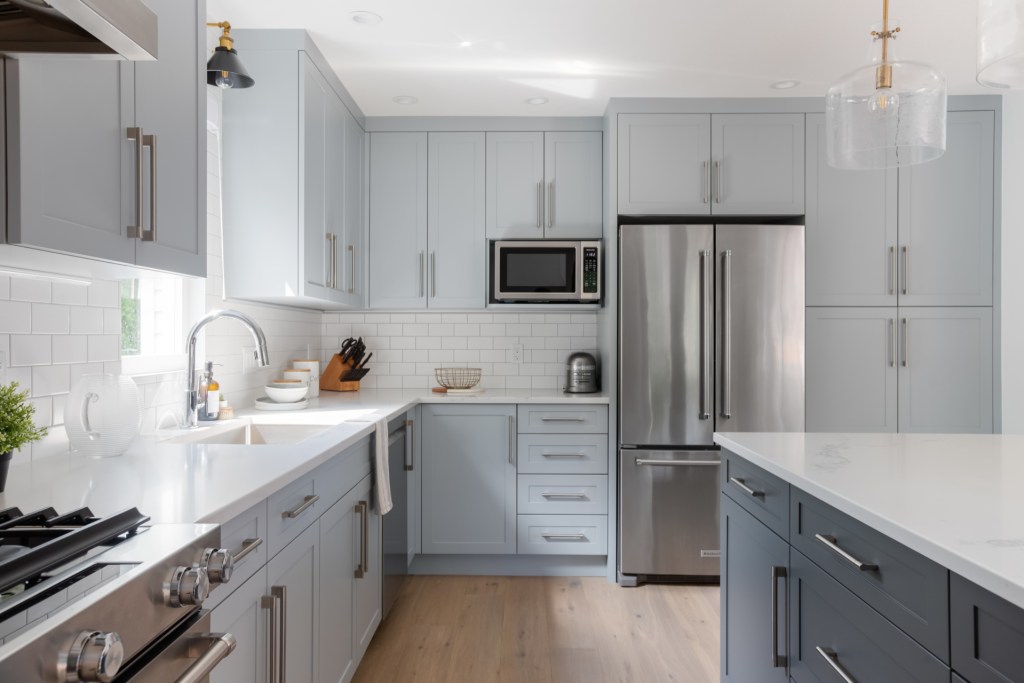At Cameron Zainali Interior Design Group, we believe that good design is both intuitive and intelligent—anchored by a deep understanding of visual balance, spatial rhythm, and material harmony. While each space we create is tailored to the client and their story, there are seven foundational principles that quietly guide the design process.
These principles are not rules, but tools—frameworks that allow us to compose interiors that are beautiful, functional, and emotionally resonant.
Below, we break down the 7 principles of interior design, and how we use them to shape thoughtful, elevated spaces across Vancouver and beyond.
Balance
Balance is the distribution of visual weight in a space. It ensures a room feels stable, grounded, and pleasing to the eye. Balance can be symmetrical (mirrored forms on either side of a central axis), asymmetrical (visually balanced but not identical), or radial (elements radiating from a central point).
At Cameron Zainali, we often use asymmetry to create a more natural, less expected form of equilibrium—think a sculptural chair offsetting a simple sofa, or a cluster of objects balancing a single statement piece.
Rhythm
Rhythm in design is about movement and repetition. It draws the eye through a room in a way that feels cohesive and considered. This is achieved through repeated elements—such as color, shape, or texture—that create continuity without monotony.
We use rhythm to guide visual flow, whether through arched forms repeated in furniture, a consistent tone in materials, or a recurring motif across lighting and accessories.
Emphasis
Every well-designed space needs a focal point—a place for the eye to land. Emphasis provides hierarchy, helping define what’s most important in a room.
This could be a fireplace, an architectural detail, or a piece of art. In our projects, emphasis is often established through contrast, lighting, or spatial framing, giving a room its sense of purpose and visual clarity.
Proportion
Proportion is the relationship between elements in terms of scale and size. It determines whether a space feels expansive or cramped, harmonious or disjointed.
We carefully consider the proportion of every piece we place—ensuring furnishings complement both the room’s dimensions and each other. A large sectional, for instance, may feel overpowering in a small space but grounding in an open-plan setting. Proportion creates dialogue between objects and space.
Scale
While closely related to proportion, scale refers specifically to how an item relates to the size of the room itself. A light fixture that is too small for a high-ceilinged space will feel lost; one too large in a compact room may overwhelm.
We often use oversized elements intentionally—to create drama or draw the eye upward—but always with balance in mind. Thoughtful scaling brings sophistication and flow.
Harmony
Harmony ensures that all design elements work together to create a unified aesthetic. It’s what ties the room together emotionally and visually.
Through a considered mix of materials, color palettes, and textures, we build layered interiors that feel calm and connected. Whether a space is minimal, bold, or eclectic, harmony keeps it from feeling chaotic.
Unity
Unity is the culmination of all the above—achieving a sense of wholeness throughout a home. It ensures that one room flows effortlessly into the next, creating a cohesive design narrative.
We often achieve unity through subtle repetition of tones, shared materials, or a consistent design language that evolves gently from space to space.
Final Thoughts: Design with Intention
The 7 principles of interior design—balance, rhythm, emphasis, proportion, scale, harmony, and unity—are the foundation of every interior we create. They provide structure without rigidity, allowing us to shape spaces that are timeless, intuitive, and deeply personal.
At Cameron Zainali Interior Design Group, these principles are not just academic—they are part of our design DNA. Whether you’re furnishing a single room or reimagining your entire home, we’re here to help you create a space that feels both artful and lived-in, elegant and honest.
Let’s Design with Purpose
Schedule a consultation with Cameron Zainali Interior Design Group






